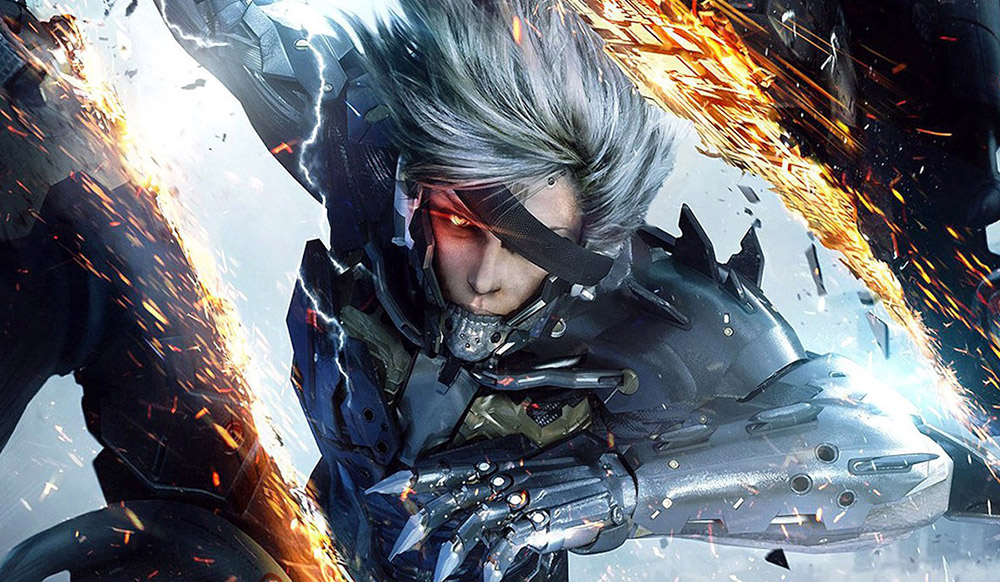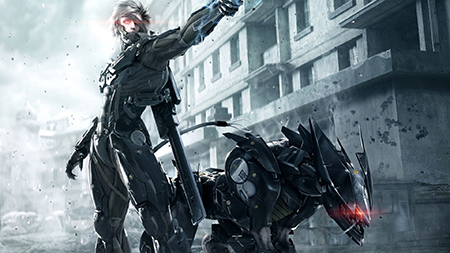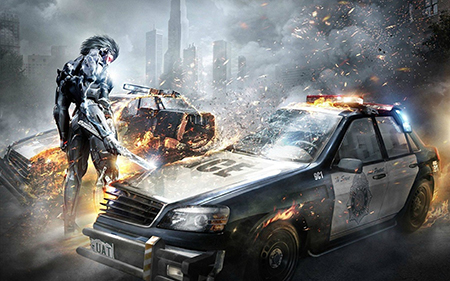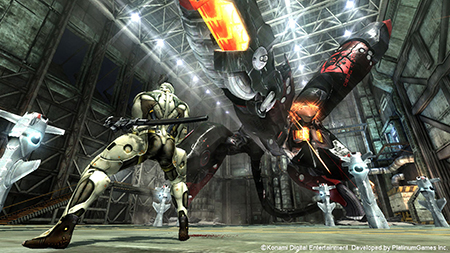
Melbourne
March 29-30, 2025
Melbourne Showgrounds

As you can probably tell from the title of this article, PlatinumGames’ Metal Gear Rising: Revengeance was released five years ago. It proved to be a big win for the relatively unknown gaming studio. They had worked on some fun original titles like Anarchy Reigns and Bayonetta, but when they acquired the Metal Gear license of all things, people really started to take notice.
PlatinumGames has since carved out its niche of delivering wildly fun and wacky action games, with a lot of emphasis on fast but accessible combat, and crazy spectacle. The bigger and louder, the better. MGR:R pretty much represents the apotheosis of this design philosophy.
The game is set in 2018, and since it has a strong political and societal undercurrent in the narrative, we thought it would be fun to look back and see what Platinum got right about 2018, what they got wrong, and the legacy that MGR has left on the action game genre. SPOILERS OCCUR FROM HERE ON OUT!
POLITICS
 Now, no one is going to argue that MGR is a deep game in terms of story, but Platinum tend to not shy away from trying to say something meaningful in their games, even if it’s just a simple action game biting off more than it can chew. The game’s story deals with the protagonist, Raiden, going up against a private military company, Desperado, who are hired to destabilise regions of peace, incite war, and then make a profit off the subsequent conflict.
Now, no one is going to argue that MGR is a deep game in terms of story, but Platinum tend to not shy away from trying to say something meaningful in their games, even if it’s just a simple action game biting off more than it can chew. The game’s story deals with the protagonist, Raiden, going up against a private military company, Desperado, who are hired to destabilise regions of peace, incite war, and then make a profit off the subsequent conflict.
The clearest possible parallel you can draw between reality and the game would have to be the big plan revealed in the last mission of the game. BIG SPOILER ALERT IF YOU HAVEN’T PLAYED THIS GAME. The main villain, US Senator Armstrong, who wants to jumpstart America out of its recession, stages a situation where it would appear that Pakistani rebels have killed a handful of American soldiers at an airbase in Pakistan.
Within minutes of the story being broken, the American people respond with calls to wage war against Pakistan. Armstrong would use this momentum to catapult himself into the Presidency and would use the war economy to save America. If this sounds a little like a conspiracy theory, then you get where this game is going.
CYBERNETICS
A core concept of the game is that cybernetic technology has become so advanced and so widespread, regular soldiers, and even police officers, are given cybernetic enhancements, in order to become ‘super soldiers’. Of course, Metal Gear has always tried to mirror reality to an extent, and with the growth of drone technology and the technological tools of destruction the military have at their disposal, cybernetic soldiers seem like the next obvious step.
 MGR looks at the implications of this technology on people. ANOTHER SPOILER ALERT. There’s a powerful scene where Raiden is forced to fight police officers while being able to hear their inner thoughts, thoughts that are blocked out from the people’s own minds by emotion-suppressing nanomachines. While these cops attack Raiden with reckless abandon, Raiden hears their fears and insecurities, and it’s quite harrowing. “I’ve almost saved up enough money to bring momma to the States.” “I.E.D. blew my leg off, signing up for this job was the only choice I had.” Some scary truths are thrown into stark reality.
MGR looks at the implications of this technology on people. ANOTHER SPOILER ALERT. There’s a powerful scene where Raiden is forced to fight police officers while being able to hear their inner thoughts, thoughts that are blocked out from the people’s own minds by emotion-suppressing nanomachines. While these cops attack Raiden with reckless abandon, Raiden hears their fears and insecurities, and it’s quite harrowing. “I’ve almost saved up enough money to bring momma to the States.” “I.E.D. blew my leg off, signing up for this job was the only choice I had.” Some scary truths are thrown into stark reality.
There’s also the subplot of the game, where, again SPOILER ALERT, orphan children from third world countries are being kidnapped, having their brains removed, and placed into VR simulations to receive military training. Child soldiers with mechanical bodies. With all the possibilities of VR opening up as the tech gets better every day, the future it heralds may be pretty close to what MGR predicted.
Not to mention the Artificial Intelligence character known as “Wolf”, a super smart robot killer, but one who is beholden to follow orders, for fear of termination. We’ve seen how AI is getting smarter all the time, particularly with Sophia the robot, and we know how well trying to keep them in line has worked in the rest of popular culture…
GAMEPLAY
Game-design wise, MGR is pretty basic. It’s not really like DMC where you wanna learn to perfect these long, complicated combos with a lot of weapon and ability switching, it’s more of an exercise in perfecting one’s reflexes and timing. Time a parry at the exact right moment to slice up your enemy into itty bitty pieces, grab their cybernetic organs, refill your health and “Ripper Mode” gauge. Do that until the room is clear.
Conceivably, a good player can constantly stay in Ripper Mode and keep a full health bar by perfecting the “Zandatsu” cuts, and that is where the core challenge comes from. Having a system where the player can constantly stay in their “super awesome” mode might seem a bit shallow and broken, but it’s a worthy payoff for pulling off the cuts.
A lot of modern games let you pull off the super cool moves with a single button prompt, usually with a big indicator above their head. Raiden’s cool moves require real skill to initiate and are telegraphed organically in the game by the enemy pulsating blue on Raiden’s visor. The rest of the combat leaves a lot to be desired though.
 Having learned nothing from Bayonetta, Raiden cannot switch weapons mid-combo, despite the fact that he unlocks really epic weapons throughout the game. Letting the player use these just seems like a really obvious idea, doesn’t it? The entire inventory system is really lacking. You have to stand still and enter a clunky menu to swap anything, it’s very frustrating and impossible to do on the fly.
Having learned nothing from Bayonetta, Raiden cannot switch weapons mid-combo, despite the fact that he unlocks really epic weapons throughout the game. Letting the player use these just seems like a really obvious idea, doesn’t it? The entire inventory system is really lacking. You have to stand still and enter a clunky menu to swap anything, it’s very frustrating and impossible to do on the fly.
Something else PlatinumGames seems intentionally set on not learning from is forced-walking sections. Arguably one of the worst video game “innovations” of all time, these are sections where the character will be forcefully, painfully slowed down, as control is ripped away from the player. In Rising, Raiden gets skype calls from his teammates every few seconds that you get stopped to listen to. You can fast-forward them, but it’s like, can I just play the game without getting stopped all the time? Just call me over the game! On the positive side, one thing Rising doesn’t shirk on is presentation. Platinum knows hype moments, and their incredibly awesome nu-metal soundtrack elevates already intense action sequences into the stuff of legend.
MINOR SPOILER: Everyone remembers the first time they’re fighting Metal Gear Ray; the giant robot swings its arm at you, the camera swoops low beneath you to show the immense scale of the beast, you hit the timing right and… BAM! RULES OF NATURE! The chorus of the song syncs up to you lifting up the gigantic machine and tossing it into the air! As you slice the robot into ribbons, the chorus blares, and you feel like a goddamn madman! It is beautiful. This is why people consider video games art, for providing that level of interactivity that no other medium can. You didn’t watch Raiden make something cool happen, YOU made it happen! You catalysed this badass moment with your own two hands!
Every boss fight has an awesome moment like this where, as the boss enters their final stage, the vocals from their excellent themes kick in, and you’re dancing around in the midst of deadly danger. More games should look to Rising as an example for how spectacularly the right music can elevate an action sequence.
So, that was our deep dive into one mixed-bag of an action game. The way it uses music perfectly, incorporates the main gameplay gimmick into combat so seamlessly, throws amazing boss fights and set pieces at you, and the way it brought PlatinumGames to a wider audience has to be commended, but there’s a lot of room for improvement.
There is so much potential to be tapped in this series, which is why we, and so many others, want to see this series return. But as it stands, with the rift between series creator Hideo Kojima, and Metal Gear owners Konami, we may never see Raiden slice and dice his way back onto our screens again, and that’s a damn shame.






